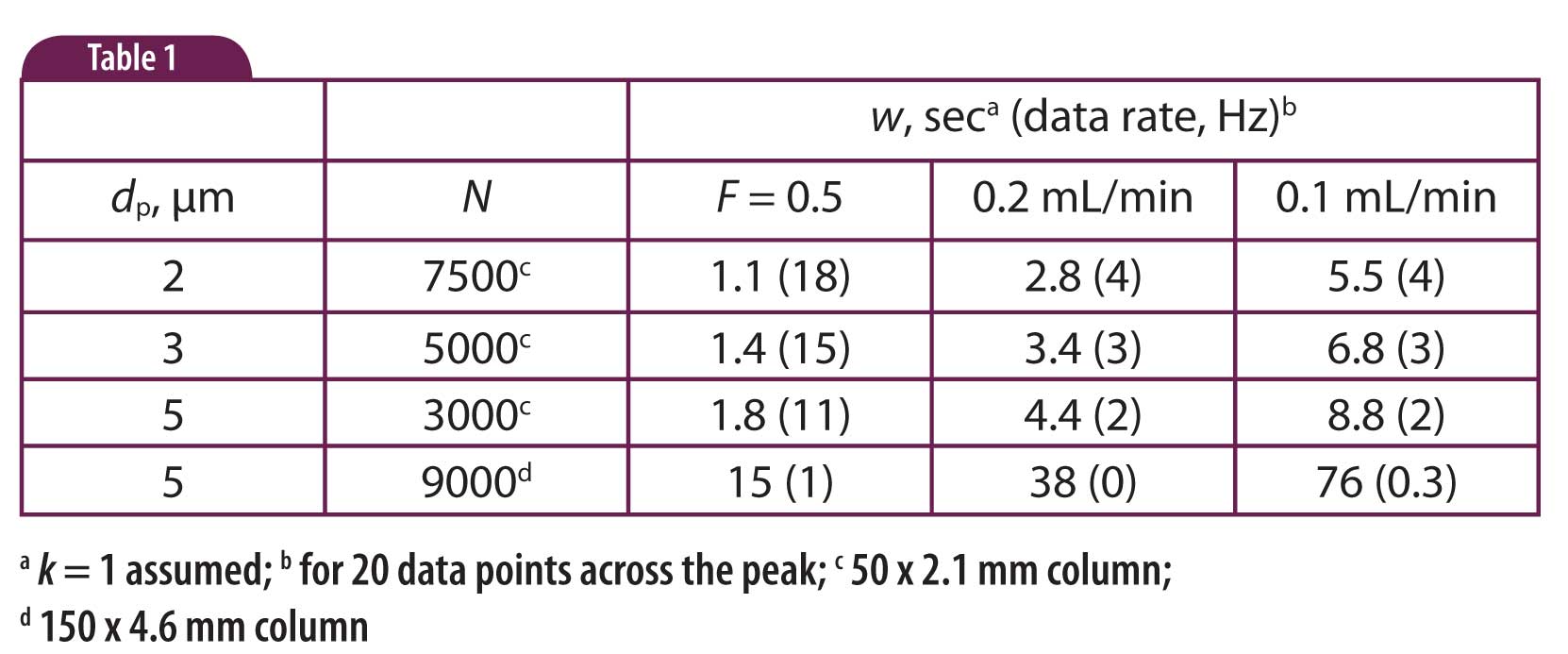I recently had a reader send me an email complaining that the peaks in his chromatogram were too narrow. At first, this seems a bit odd – after all, most people complain because peaks are too wide, so narrow peaks usually are preferred over broader ones. Digging into the question a bit more will highlight the real problem.
The reader was evaluating a new 2-µm particle column in a 50 x 2.1 mm column configuration run at 0.5 mL/min, with the goal of speeding up an LC-MS/MS analysis. The small-particle column enabled the separation of the natural-product sample in less time than the prior method, but now the peaks were too narrow to enable the MS to gather enough data points across the peak for good data quality. My first thoughts are that the data rate on the MS is too slow. As a general rule, we’d like to get 15-20 data points across a peak for good quality data.
Reality Check
In cases like this, I always like to do a reality check to see if my hypothesis is reasonable. I’ve summarized some calculations in Table 1. You can see in Table 1 that for a k = 1 peak with the system run at 0.5 mL/min, the peak width of 1.1 sec would require a data rate of ≈18 Hz to sample 20 points across the peak. A 20 Hz data rate should not be a problem for any data acquisition system in today’s lab; many of the newer systems sample at 100-200 Hz. So I suspect that the data rate is not set high enough for these narrow peaks. This would be simple to check – just look at the current data acquisition rate setting and increase it, if appropriate.
 Table 1
Table 1
An Alternative
An alternative way to determine if the data rate is too low is to artificially increase the peak width, keeping the data rate constant. This can be done by lowering the flow rate, which increases the time the sample spends in the detector, but should not adversely affect the separation. For example, we can see in Table 1 that lowering the flow rate from 0.5 to 0.2 mL/min drops the data rate requirement from 18 Hz to 4 Hz. So if you lower the flow rate and the data quality improves, this also is an indication that the data rate was too slow in the original case. Of course, lowering the flow rate will extend the run time, which works against the original goal of reducing run time, so this route is only useful as a reality check for the data rate.
This blog article series is produced in collaboration with John Dolan, best known as one of the world’s foremost HPLC troubleshooting authorities. He is also known for his research with Lloyd Snyder, which resulted in more than 100 technical publications and three books. If you have any questions about this article send them to TechTips@sepscience.com
